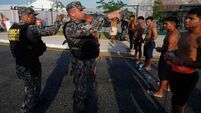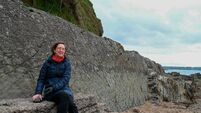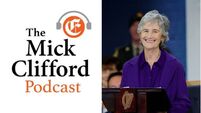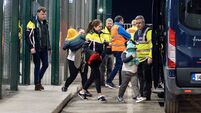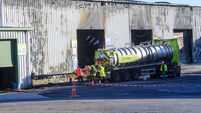Dr Stephen Flood: Coastal communities can't be left to weather climate change alone
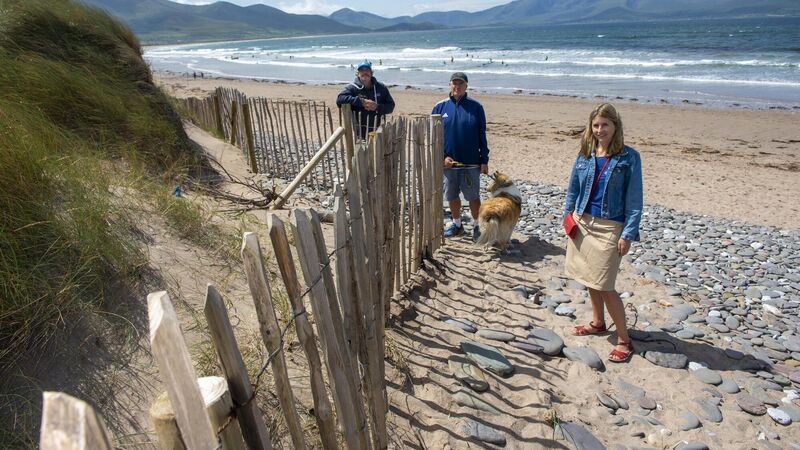
Eugene Farrell, University of Galway, with Martin Lynch and Martha Farrell of the Maharees Conservation Association, standing next to the fence which has been erected to protect against the erosion of the sand dunes on Magherabeg Cut beach on the Maharees peninsula in West Kerry. Picture: Dan Linehan
On a crisp November morning in 2022, members of the Irish Climate Change Advisory Council Secretariat took a visit to a stunning location in West Kerry. We met with the Maharees Conservation Association to learn more about this beautiful coastal community and its mission to protect their main access road.
The 5km tombolo (a landform by which an island becomes attached to the mainland by a narrow piece of land) is located on the northern side of the Dingle Peninsula. It is an area of significant natural beauty, a well-know tourism attraction with the beautiful sandy Brandon Bay beach but also home to a vibrant community.
The Maharees Conservation Association was formed in 2016 following a series of extreme stormy winters from 2013 to 2016 when the coastline was inundated by a number of powerful coastal storms and strong onshore prevailing winds. During the winter of 2015-2016 the local council was deployed 15 times to clear the roads which had become impassable due to wind-driven sand.
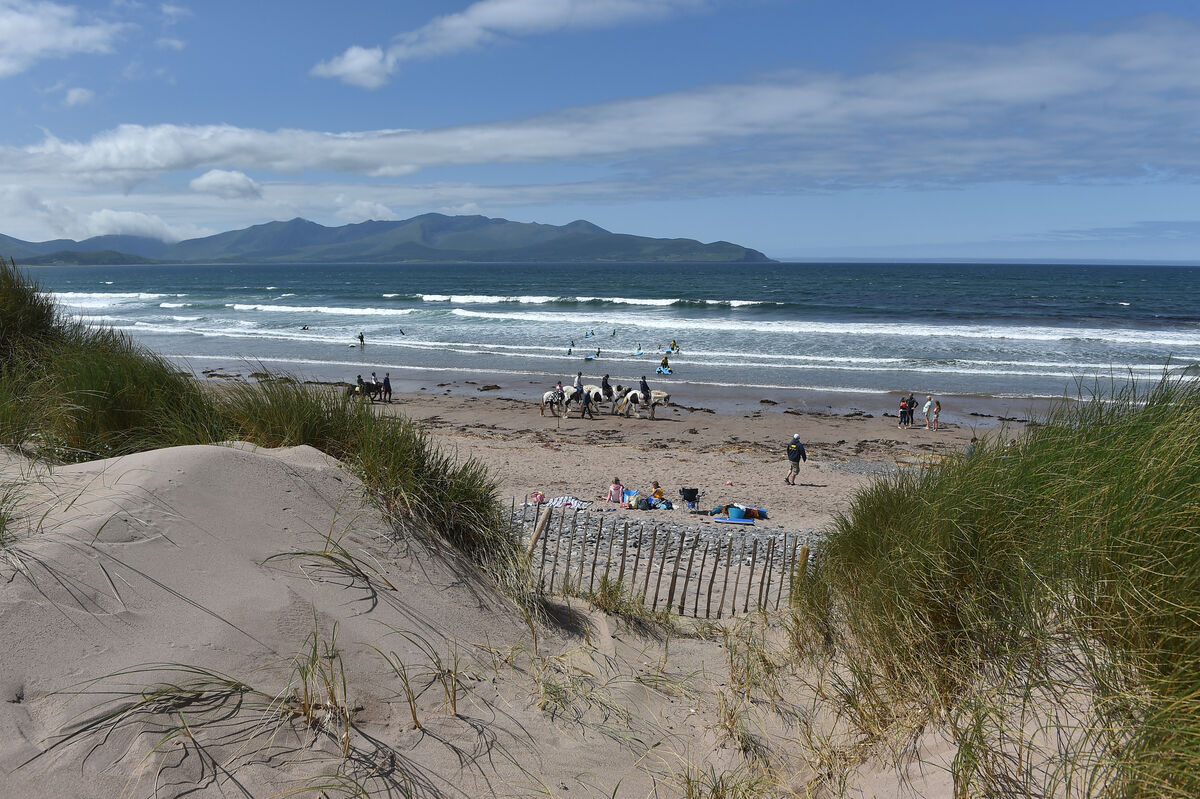
It was clear that storms were having an enormous impact on the dunes which were the only barrier protecting the community from the storms. Since 2016, the association has actively sought to address the adverse impact of coastal erosion by raising awareness and putting in place practical measures and a comprehensive management plan to ensure the future of the coastline. They are seeking a long-term solution to the problem of coastal erosion from their local and national representatives.
Their story is one of a community coming together to protect their local environment, transport links, and livelihoods. However, what became very clear is that our government agencies and supporting bodies are not currently set up to nimbly react to the pressing needs this coastal community had. The procedures and funding structures are not there to help. Without the foresight and leadership of Maharee Conservation Association members, including the chair Martha Farrell, and University of Galway coastal geographer Dr Eugene Farrell, the dune replenishment scheme now in place would not have been achievable. Moreover, its long-term sustainability is currently dependent on dedicated community volunteers.
In Ireland, 1.9m people have made their homes within 5km of the coast, representing 40% of the total population. Of these, 40,468 have been identified by the Central Statistics Office as living less than 100m to the nearest coastline. As we experience increased erosion and coastal storm events magnified by our changing climate, coastal communities need a clear and fit-for-purpose Coastal Management Strategy to help actively manage our changing coastlines.
We are experiencing widespread and rapid changes in the atmosphere, ocean, cryosphere (frozen water found on the earth’s surface), and biosphere (the regions of the surface and atmosphere of the earth or occupied by living organisms). The impacts of this are increasingly apparent, and include changes to temperature and rainfall, and increases in frequency and intensity of certain weather and climate extremes.
Key identified Irish climatic hazards and impacts are:
- a rise in temperatures, which will increase the number of heatwaves with the attendant risk of increasing frequency of droughts;
- altering precipitation patterns, which will increase flood risk;
- changes in the character of weather extremes such as storms, flooding, sea surges, and flash floods
- sea-level rise leading to coastal inundation, and erosion.
Ireland is already experiencing different kinds of extreme weather events with increasing frequency and intensity. For example, Ireland was directly affected by three named storms in 2021 (Darcy, Arwen, and Barra), the second of which caused especially notable damage — flooding homes across the country, leaving 59,000 homes and businesses without power, and causing disruption to schools, colleges, transport, and hospitals.
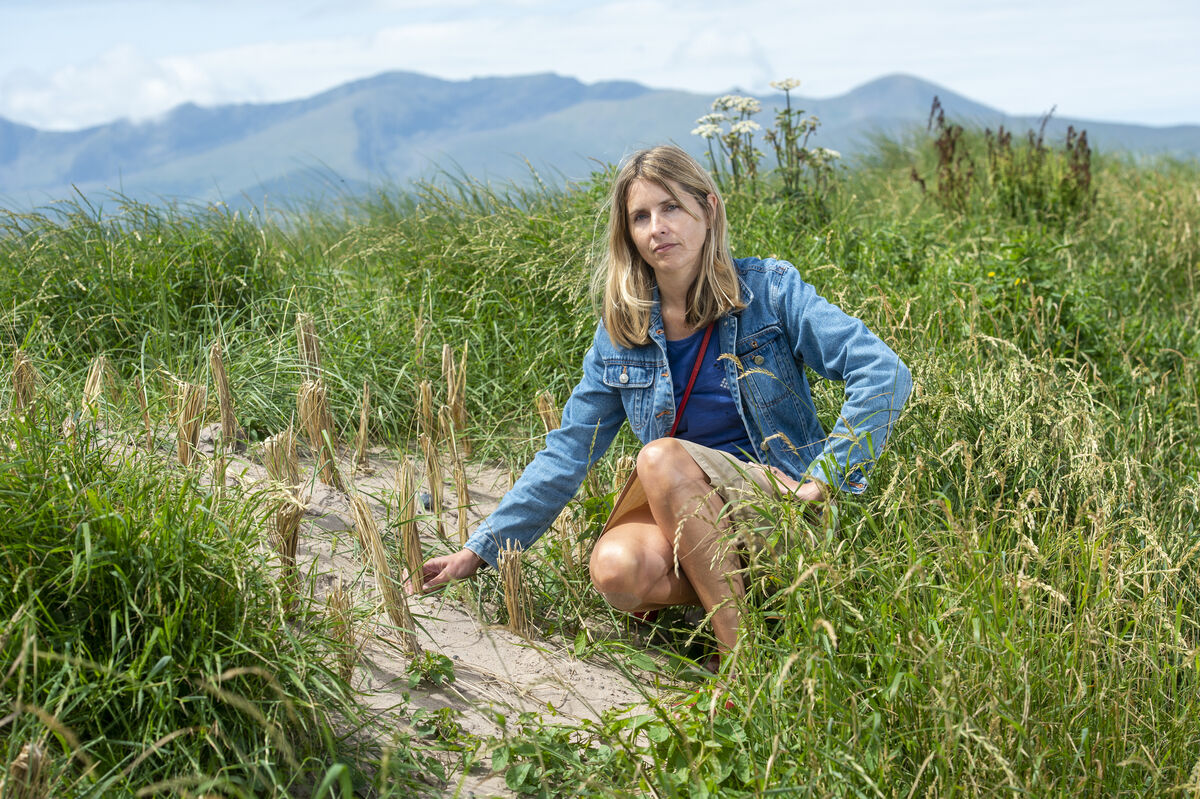
These storms highlight how vulnerable our existing infrastructure can be to extreme weather events and underline the need to prepare for a changing climate.
Irish climate modelling analysis indicates that the risk of drought will continue to increase in the coming decades as dry periods in summer become ever more frequent and extreme. Heavy rainfall events are also projected to increase substantially, particularly in autumn and winter hitting a range of Irish sectors with impacts likely to be most severely felt in the areas of transport, critical infrastructure, natural and built heritage, and agriculture. Further coastal erosion, driven by sea level rise and increasingly intense coastal storms, is also projected.
There is a clear need for indicators to measure changes to our coastal environment including erosion and accretion (accumulation of sediment), as well as changes to our natural coastal features such as sand dunes and salt marshes. Ireland’s revised National Adaptation Framework and National Implementation Strategy for Nature-Based Solutions (both scheduled for publication in the final quarter of 2023) should give strong consideration to protecting our stunning coastline.
Moreover, a soon-to-be-published scoping report on coastal change management will frame the work needed to develop our first National Coastal Management Strategy.
The community in the Maharees is just one example of people working together towards delivering the solutions needed to make our communities more resilient in the face of climate change. These communities are well placed to identify their specific needs and articulate their vision for a sustainable future in their area, but they need Government and state agencies to work in concert with them to provide the support and planning measures required to achieve these aims.
CLIMATE & SUSTAINABILITY HUB




